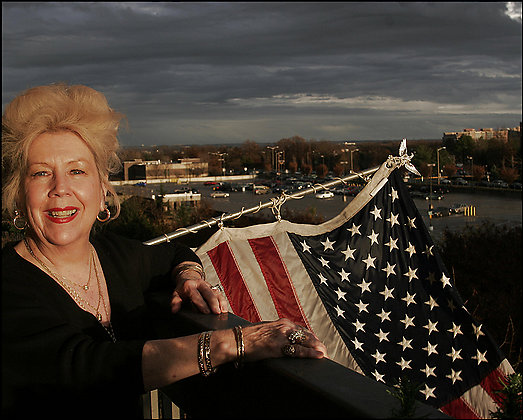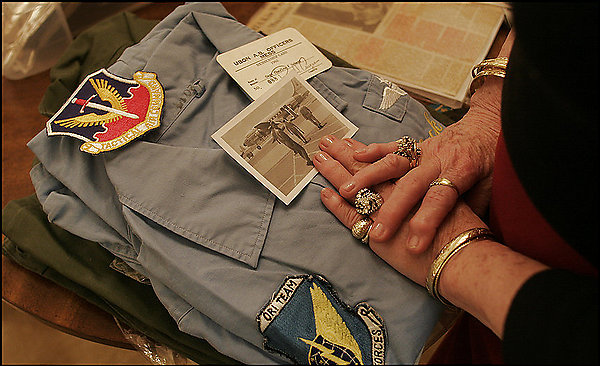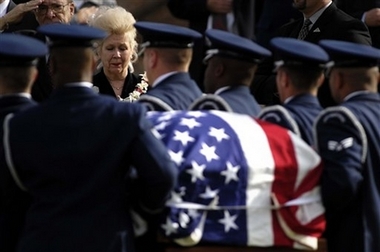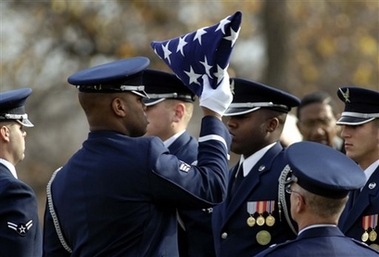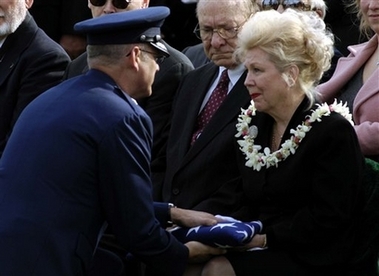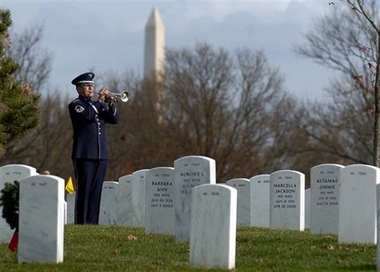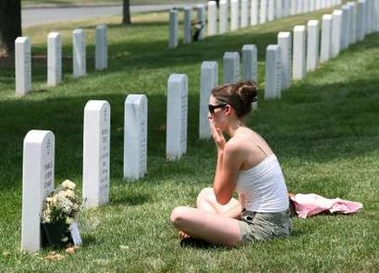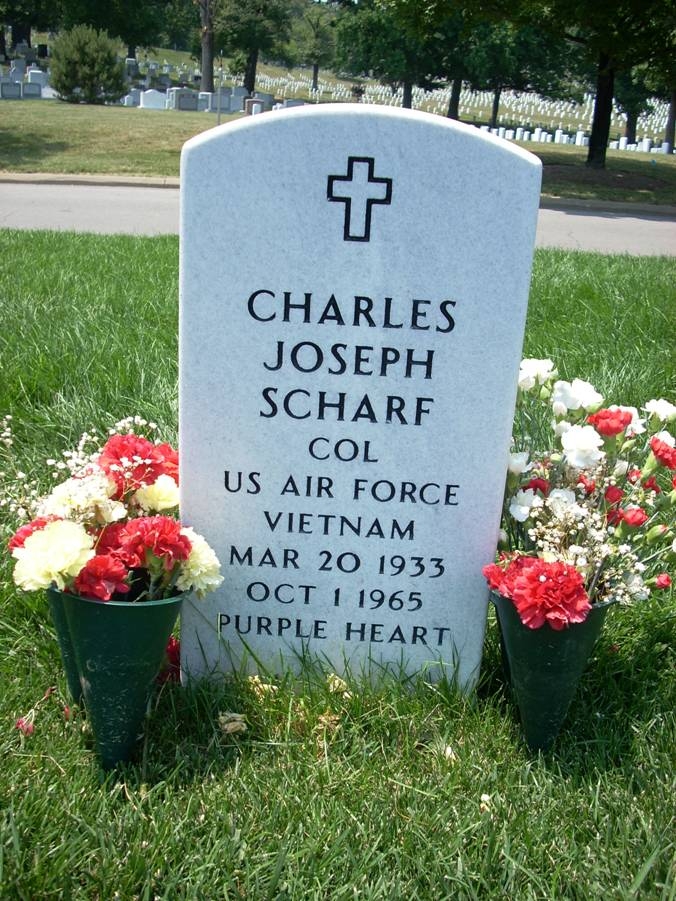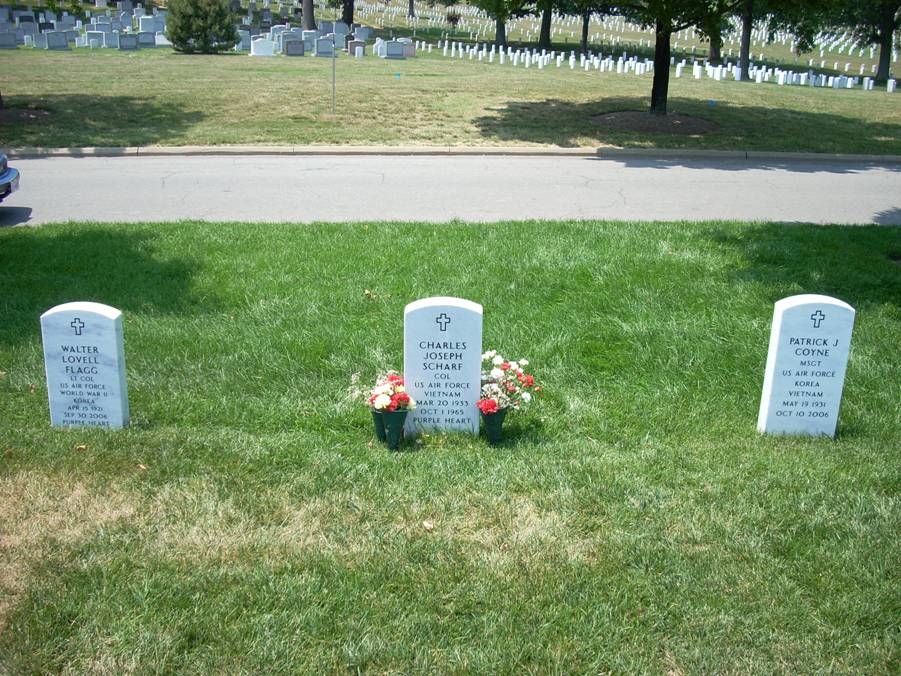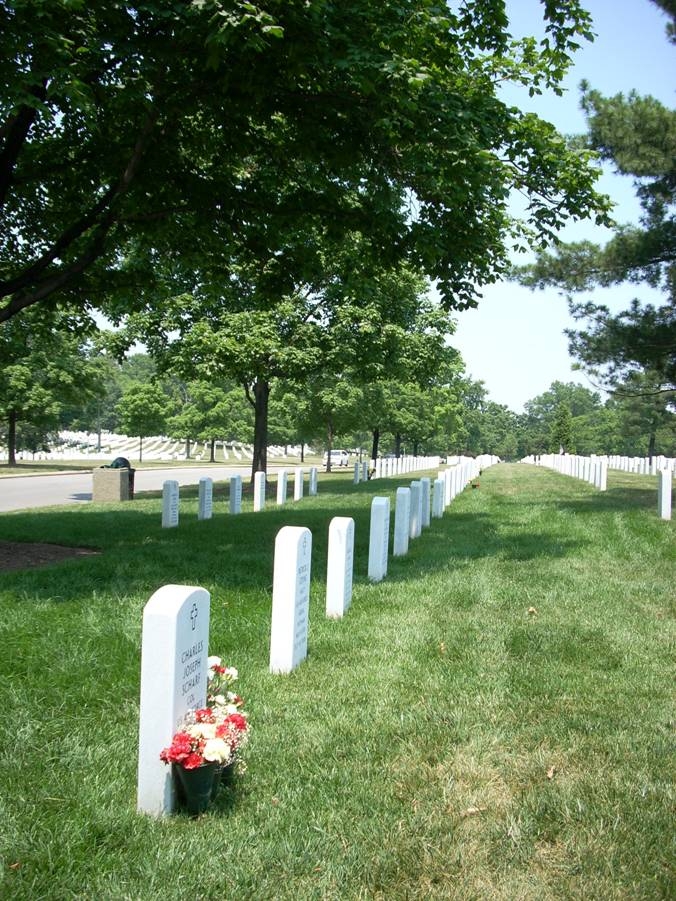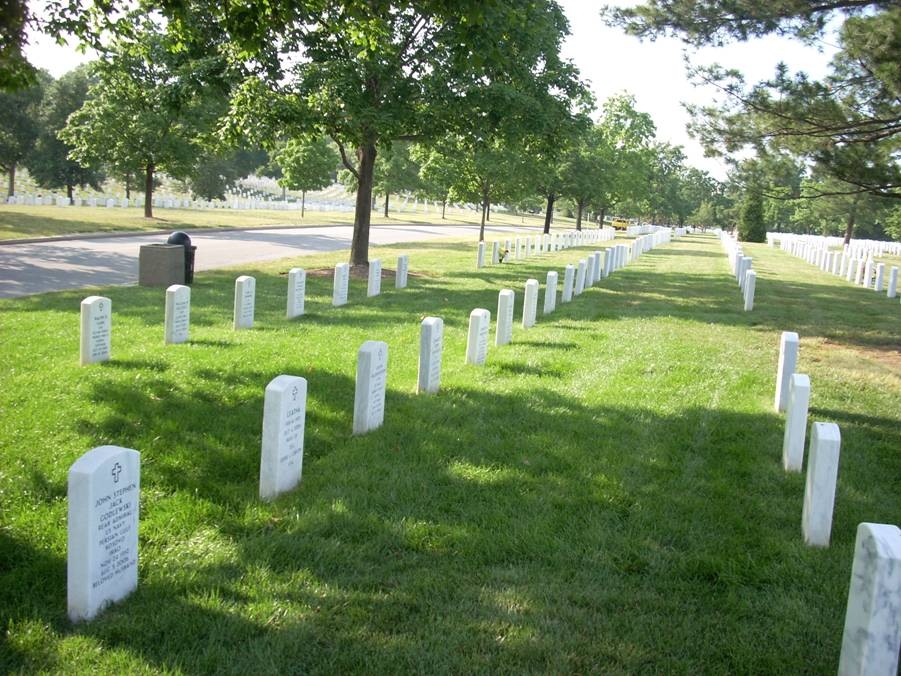NEWS RELEASES from the United States Department of Defense
No. 1145-06 IMMEDIATE RELEASE
November 09, 2006
Air Force Pilot Missing in Action from Vietnam War is Identified
The Department of Defense POW/Missing Personnel Office (DPMO) announced today that the remains of a U.S. Air Force officer missing in action from the Vietnam War have been identified and are being returned to his family for burial with full military honors.
He is Colonel Charles J. Scharf of San Diego,California. His funeral is scheduled for November 30, 2006, at Arlington National Cemetery near Washington D.C.
Colonel Scharf and a fellow crew member took off in their F-4C Phantom IIs from Ubon Royal Thai Air Force Base in Thailand on October 1, 1965. Their mission was to attack an enemy concentration and a major highway in North Vietnam. After the lead aircraft developed problems en route, Scharf assumed the lead of the two other F-4s in the flight. After he completed two bombing runs, Scharf’s aircraft was hit by enemy fire. His radio transmission of “Mayday, Mayday, Mayday” was heard by the other two aircraft. One radioed “Gator 3 (Scharf’s call sign), you’re on fire, you’d better get out! Bail out, Gator 3!” Scharf’s plane began to disintegrate and a parachute was seen leaving the aircraft.
The other two aircraft lost sight of the parachute, and circled the area for about 10 minutes where Scharf’s aircraft had crashed and burned but no radio or visual contact was made then nor in subsequent aerial search and rescue operations.
In January 1990, the Socialist Republic of Vietnam (S.R.V.) provided information to U.S. officials indicating two men were buried near their crash site, but that one had been washed away during flooding. Within a month, a joint U.S.-S.R.V. team, led by the Joint POW/MIA Accounting Command (JPAC), interviewed three witnesses to the crash and located scattered wreckage at the site. The 1992 excavation of that site yielded human remains, a dental prosthesis, numerous personal effects including the rank insignia of Scharf’s fellow crewman. A second joint excavation in 1993 recovered additional artifacts, but no remains.
A third excavation in 2004 recovered additional evidence including pilot-related life-support artifacts, a metal captain’s insignia (Scharf’s rank at the time) and a plastic denture tooth.
Among dental records and other forensic tools and circumstantial evidence, scientists from JPAC and the Armed Forces DNA Identification Laboratory (AFDIL) also attempted to use mitochondrial DNA from a known maternal relative to establish the identification. However, the tests were inconclusive. From Scharf’s widow, they obtained a number of envelopes containing letters he had sent to her during the war. AFDIL specialists were able to extract mitochondrial DNA from the gummed adhesive on those envelopes, and JPAC was able to confirm the identification. JPAC’s detailed analysis of the debris and other evidence concluded that the parachute sighted was the F-4C’s drag parachute.
For additional information on the Defense Department’s mission to account for missing Americans, visit the DPMO web site at www.dtic.mil/dpmo or call (703) 699-1169.
27 November 2006:
Military scientists used a fragment of bone and saliva from love letters to identify a U.S. Air Force pilot who died during the Vietnam War.
Colonel Charles J. Scharf was listed as missing in action after his plane went down in a jungle in North Vietnam 40 years ago, The Washington Post reports.
Positive identification was established by matching DNA from a tiny fragment of bone found at the crash site to saliva from letters he sent his wife, Patricia, now 72.
Scharf will bury her husband at Arlington National Cemetery Thursday.
His coffin will contain the bone fragment and other items found at the crash sight along with a military uniform complete with badges and medals.
The remains of more than 1,300 lost U.S. service members have been identified over the years with 850 of those from the Vietnam War alone.
Separate Truths
When Remains of a Vietnam-Era Pilot Were Identified, One Woman Found Closure, Another Kept Up the Fight
By Theresa Vargas
Courtesy of the Washington Post
Monday, November 27, 2006
For two women, so much comes down to this: a fragment of bone and the lick of a love letter.
Military scientists recently compared the bone recovered in a North Vietnamese jungle where an Air Force pilot’s plane went down 40 years ago to saliva on letters he had sent his wife. It was a DNA match, they announced. At last, they said, the remains of Colonel Charles J. Scharf had been found.
Patricia Scharf, 72, of Northen Virginia, has never remarried, has never had children and still considers the Vietnam War officer the love of her life.
Patricia Scharf will bury mementos of her husband, Colonel Charles J. Scharf, along with a bone fragment recently identified as his,
at Arlington National Cemetery on Thursday. Barbara Scharf Lowerison is the sister of the Air Force pilot, whose plane
crashed in a North Vietnamese jungle 40 years ago, and she believes he is still alive.
What they couldn’t have known, however, was how differently that announcement would affect two women he left behind.
His widow, Patricia Scharf, 72, of Northern Virginia, has never remarried, has never had children and still considers the Vietnam War officer the love of her life. For her, the announcement was the gentle rub across the shoulder she had waited four decades to feel, one that let her know it was all right to let go.
For Barbara Scharf Lowerison, 72, his sister in California, the announcement was a slap. It meant she was losing — if she had not already lost — her fight to convince officials that her brother is alive, a prisoner of war.
The remains of more than 1,300 lost U.S. service members have been identified over the years, with 850 of those from the Vietnam War alone, according to military officials. Usually when remains are identified, relatives emotionally embrace the finding, said Larry Greer of the Department of Defense POW/Missing Personnel Office. And among the few who reject it, most eventually come around “because the science is so overwhelming,” he said.
“One of the things it does do for all of us, and we hope for the families, is it helps write the closing chapters of this story that has been painfully open for 40 or 60 years,” Greer said.
If that is true, then the story of Charles Scharf, it seems, has two endings.
‘What Kept You?’
Patricia Scharf wears the same shade of vibrant red lipstick as in the photos of her youth. After “Chuck” didn’t come home with the rest of the POWs, she spent years fantasizing about how he might swoop back into her life.
“If he was to walk in that door right now, I could love him like when I was young,” Scharf said. “And I’d say, ‘What kept you so long?’ ”
But the proof that he is gone, really gone, lay across her Falls Church dining room table one recent night, separated into small plastic bags labeled with black marker.
There was the burnt, tattered wallet he was carrying the day his plane was shot down in October 1965. A singed identification card, with his name decipherable, was inside. There were his dog tags. His silver captain’s bars. (He was promoted posthumously to colonel.) The torn, worn scapular, or cloth religious pendant, he received on their wedding day. Scharf has an identical one.
“Nobody has that. What other pilot has that? That is ours. That is ours,” she said.
The items, officials said, were found during several excavations of the crash site.
“Now I’m convinced,” Scharf said. “I really am.”
They met when she was 16 and married two years later. They had 13 years together before he left for war. She remembers standing among the other Air Force wives on a runway in Florida the day the men flew away. She waved a scarf so Chuck would see her, and he saluted back. A pilot’s pregnant wife stood next to her, crying.
“She was saying she knew she wasn’t going to see her husband again,” Scharf said. “I said: ‘Yes we are. We’re going to meet them with champagne when they come back.’
“Well,” she started, then stopped.
“It was a beautiful life,” she said. “It had glory in it. It had strength in it. It had romance in it.”
The love letters he sent, about 75 over three months, are addressed to “Mrs. Charles Scharf” outside and to “darling” and “sweetheart” inside. In one, he talks about the family they would start when he returned. They had lost a baby, a girl, at birth.
If she had lived, she would have been almost 50 today, Scharf said. “I would have been a grandma.”
After her husband disappeared, Scharf said, she had to learn to take care of herself. She sells jewelry in the Pentagon, and the people there are her family, she said. But when she comes home, she is alone. She talks about her life with Chuck separately from her life without him.
She said that, unlike his sister, she had to let him go.
“I was the wife. It was our life. It was us who lived together. She still has a family. She has everybody there,” she said of his sister.
Scharf first held a memorial for her husband in 1978, when the Air Force technically declared him dead. It was a memorial with an empty box. When she buries him Thursday at Arlington National Cemetery, the coffin will carry the bone fragment and a uniform, complete with badges and medals, as if he were wearing it. She also will place the items from the crash site and the love letters in the coffin.
She plans to be buried there with him eventually.
“I now know where I’ll be,” she said.
‘Not My Brother’
Barbara Scharf Lowerison would stop the funeral if she could. And she certainly won’t be there for it, she said.
“I don’t know what they are burying,” she said. “That is not my brother.”
Charles Scharf was older by a year-and-a-half, and he was her protector before he was his wife’s.
“I’ll never forget when I had my first baby. I was 18 years old, and he wanted to take over,” she said, laughing. “We had a brother-and-sister rivalry at times, but there was nothing I wouldn’t do for him.”
About 25 boxes sit in her Hemet, Calif., home filled with letters, witness statements and scientific reports. She thinks he survived the crash, and if he isn’t alive, he was until this year. For four decades, she fought to bring him home.
“I think I’ve been a pain in a neck to everybody. But that’s okay. I’m fighting for my brother,” she said.
Before he disappeared, Lowerison was a housewife raising five boys and had no involvement in politics.
Since then, she has established sources in Vietnam and Russia whom she has asked for help. She has lobbied presidents from Richard M. Nixon on, giving each a POW bracelet with her brother’s name. And for every piece of evidence Pentagon officials have put forth to prove they found Scharf, she has fired back questions:
Why were the items at the excavation site not burned beyond recognition like the bodies?
Why did he have anything on him when most Air Force officers had to store personal effects in a locker before a mission?
Why was the bone fragment not good enough to establish a match with the blood sample she gave in 1992 but now can be matched with the letters?
“No one is telling the truth in this story,” she said. “That’s the bottom line. No one is telling the truth.”
Her proof, she said, includes statements from a former POW who was in her brother’s squadron. He told her that he saw photographs of Scharf after the crash. There is also a propaganda film in which a man can be seen for only seconds but walks exactly like her brother, she said.
“I used to say he swiveled when he walked,” Lowerison said. “He had a little bit of a sway to him.”
About two weeks before he disappeared, she received a letter from him. In it, he told her that he was sending her a ring for her birthday and that he had “some good war stories” to tell her boys when he got home, she said.
She thinks he would appreciate the fight she has launched in his name. “He would have a smile on his face and give me a thumbs-up sign,” she said.
If she had never seen the evidence, never heard from others who think he didn’t die in the crash, she said, she might have gone along with the military’s version, might have been able to bury him long ago. She still might be able to, she said, but not this way.
“If they come and tell me he died six months ago, I’d go along with it,” she said. “I would go to that burial.”
Lowerison and Patricia Scharf don’t speak ill of each other. They don’t speak much of each other at all, each dismissing the other’s beliefs in short, neutral sentences. “That’s her prerogative,” Lowerison said of Scharf. “Everyone has different ways of grieving,” Scharf said of Lowerison.
So on Thursday, Scharf will stand before her husband’s plot at Arlington, content that she has a place now to lay flowers. Lowerison will remain in California, not saying goodbye, not letting go.
Pilot’s wife finds comfort at graveside after husband missing for 40 years
By Amanda Peterson
November 2008
(AXcess News) Washington – Patricia Scharf comes prepared when she visits her husband’s grave at Arlington National Cemetery every week.
She keeps clippers in her trunk to trim long flower stems, and she brings cupcakes to the security guards.
For 41 years after her husband, Charles Scharf, went missing during the Vietnam War, Scharf did not know where he was. Now, she said, she goes to his grave, where his bone fragments and photos are buried.
“He’s not lost forever,” said Scharf, 75, of Falls Church, Virginia. “I know where he is, and I know where I’m going right next to him.”
The U.S. Air Force Colonel she refers to as Chuck disappeared October 1, 1965, when his plane was shot down over North Vietnam, two weeks before he would have returned home.
On the day she found out he was gone, she answered the door without checking who it was. The base commander from MacDill Air Force Base in Florida, where her husband was stationed, stood at her doorstep along with two squadron commanders and a base doctor.
Sobbing, Scharf said she asked if her husband was dead.
“They said, ‘No, as far as we know, he’s only missing,'” Scharf said.
At first, Scharf said she held out hope that he would be found as a prisoner of war. She listened to each news report of a recovered plane, hoping it was his.
But in 1978, after every soldier located in a POW camp had come home, Scharf officially became a widow when her husband’s status was changed from missing in action to killed in action. By then, she had moved from the base in Tampa, Florida, to Northern Virginia.
She took a job at a Pentagon jewelry store and worked there for more than 40 years before retiring in April. She never remarried.
As long as a service member is missing, each branch of military provides casualty service officers to update family members, said Jim Russell, chief of the Air Force’s Missing Persons Branch.
“We knew it was important as a trust to our service members and to the families that there’s an agency that would assist families,” Russell said.
In October 2006, there was a break in Scharf’s case. She said the researcher trying to match DNA to remains found in Vietnam asked if she had anything else they could use.
“I said that all I still had were the letters he had sent me,” she said. After a long pause, Scharf said the researcher asked her to overnight about 12 envelopes to the lab in Hawaii. They would try to extract DNA from the stamps, he told her.
It worked. Chuck Scharf was the first service member whose remains were identified using DNA from old stamps.
When Scharf visits her husband’s grave near sunset and hears taps in the distance, she said she imagines all of the service members standing at attention, saluting the flag.
Then she thinks about them heading off to happy hour to share a beer and a story, she said. And one day, she said she wants to join them.
Members of an Air Force Honor Guard carry the remains of Colonel Charles J. Scharf, of San Diego,
past his widow, Patricia Scharf, during funeral services at Arlington National Cemetery, Thursday, November 30, 2006.
An Air Force Honor Guard member holds the folded flag from the casket of Colonel Charles
J. Scharf during funeral services at Arlington National Cemetery, Thursday, November 30, 2006.
Patricia Scharf, right, is presented with the flag from the casket of her husband, Colonel
Charles J. Scharf, during funeral services at Arlington National Cemetery, November 30, 2006.
An Air Force bugler plays taps during the funeral services for Col. Charles J. Scharf,
of San Diego, Thursday, November 30, 2006 at Arlington National Cemetery
Unidentified Visitor To The Gravesite of Colonel Scharf, June 2007
Michael Robert Patterson was born in Arlington and is the son of a former officer of the US Army. So it was no wonder that sooner or later his interests drew him to American history and especially to American military history. Many of his articles can be found on renowned portals like the New York Times, Washingtonpost or Wikipedia.
Reviewed by: Michael Howard

